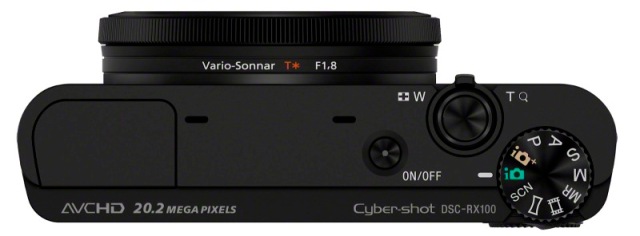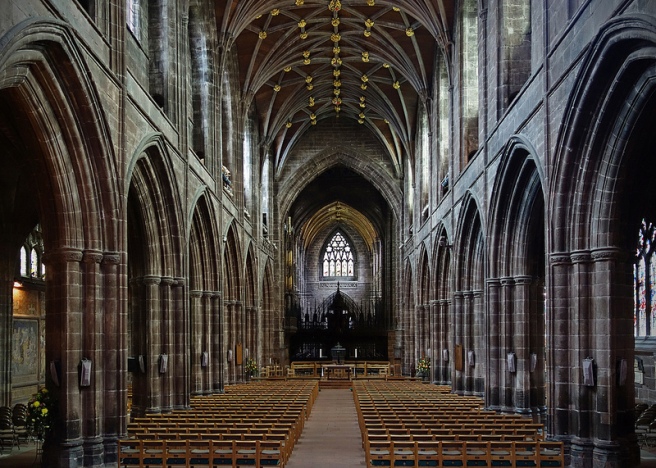The Sony RX100 is a small digital camera designed to fit in a pocket and appeal to DSLR users wanting a compact camera capable of great results without the size, weight and inconvenience of carrying around traditional bulky photographic gear.

Before I bought my Sony RX100 I had used the popular Panasonic Lumix LX5 for a few years. It was a lovely compact travel camera and superb for taking landscape shots whilst away holiday. I admired the wide angle lens on the Panasonic & found results taken outside in daylight perfectly fine, but it did suffer when light levels started to drop. In reality, shots from the LX5 started to get very noisy when using settings of ISO800 and above.
What I needed was a replacement small digital camera that worked in all situations, could fit in my pocket, had a high quality lens and importantly … worked in less than ideal lighting situations. Of course I did a fair bit of homework when it came to choosing a new model and considered the new Panasonic LX7, the Canon G series models & a few others.
Many reviews were starting to praise the Sony RX100. It had a large 20.2 Megapixel sensor, an f1.8 Carl Zeiss lens, RAW capability and was genuinely well-built encased in a tough metal body. I’d seen enough evidence and sample images to take the plunge and buy one. So read on to find out how I’ve been getting on with the Sony RX100 in the last 6 weeks as a go everywhere digital camera and see if it’s the perfect all round compact digital camera for you.

The Sony RX100 review
Compact is the key here. The RX100 is a genuinely small camera that will go into your pocket. I don’t just mean a coat pocket either … This camera will happily slip into your trouser pockets which can’t be said for many ‘serious’ compact cameras. This is due to the fact that the RX100 has a fully retractable lens which disappears inside the body when turned off. (no fiddling around with lens caps). The Sony doesn’t have a hot shoe either which allows a smooth profile when the camera needs to be put away or grabbed quickly. However, because it’s so small & somewhat slippery a little care must be taken to keep hold of it. The RX100 comes with a wrist strap alone and while this makes perfect sense rather than a full strap it does mean you have to keep a keen grip on it. (There is an option to attach a standard camera strap to the side lugs)

Handling & Controls
The camera is up and running within 2 seconds of turning it on. The standard PASM controls are on the top dial along with scene, video & 2 programme modes. I’m not normally a fan of Auto modes, but Sony seem to have got this right when you just need to leave the camera on point and shoot. There is an intelligent auto mode & a supreme auto mode, which I thought was rather a strange idea when I first started using it, but in regular use these modes begin to make sense. In a nutshell intelligent auto takes care of everything in normal outdoor use in good light. Switch to supreme auto when conditions start to get a little more tricky e.g. indoors, night-time etc. Supreme auto uses a stacking system and will take several photos and layer them together resulting in a well-balanced final image. This sounds like technology taking a step too far, but believe me .. it works … and it works really well. (Just be aware due to the fact the camera is taking several images in succession, this isn’t the mode if your subject is moving)

The RX100 has a 3 inch LCD rear screen and uses Sony’s whitemagic display technology meaning it can be seen in all conditions. Safe to say that it’s always pretty easy to see what’s going on when composing images even in sunshine, so it does what it says in the book. Talking of the book … The Sony RX100 only comes with a basic manual which doesn’t explain all the menu functions, modes and custom options that can be performed with this camera. You’ll have to go online to Sony to find the full manual I’m afraid.
The menu functions and further modes are accessed on a rear dial, of which there are many settings to absorb and work out what’s best for you. There is also a custom button to jump straight to movie mode, but more about that later. Custom functions can be set and assigned to the Fn button for ease. I’ve assigned exposure compensation, drive settings, ISO & image modes to this button. If I could criticise anything about the RX100 it’s a lack of a dedicated exposure compensation dial. (I think you may be able to assign it to the front wheel, but I haven’t found that in the non-supplied instruction book yet!)

Focusing, Exposure & Shooting Modes
I’ve already covered the two auto modes which are fine for general use, but there are many other modes to use when you start digging deeper. There are intelligent scene modes and various fun settings of which several are a little hit and miss, but hidden away are some very usable setting indeed. As you can see from the sample images on this page, I’ve become a fan of the high-contrast black & white setting which works brilliantly. The resulting images need little or no post editing afterwards which ticks a lot of my boxes. The less work I have to do after a days shooting the better. You may want to experiment with some of the HDR & Illustration modes to see if they work for you.
When it comes to focusing, the Sony RX100 is generally very good. I’ve spent whole days out and about and it’s only failed to focus a few times & to be honest, that’s been down to user error if I’ve been wanting offset macro photos for instance. The RX100 will automatically go into macro mode when you are close to a subject and needs to have the right focus point set, but other than that, generally it’s pretty good.
The exposure too has been pretty spot on in general and the camera is intelligent enough to work out if a subject is back-lit or not. I generally keep flash settings in the ‘off’ setting, but the RX100 seems to be good when the flash is in operation too. One little surprise is the ability to tilt the flash back and bounce the flash for a more flattering image. This takes a little deft work with a finger to hold the flash back, but it works surprisingly well.
The rest
The Sony RX100 has an equivalent zoom range of 28-100mm which covers everything I would need in normal use (It would have been nice if it had been a little wider, but you can’t have everything). The battery seems to last all day even with quite heavy shooting. The Sony website estimates 330 shots, but I’ve managed over 400 without panicking that the battery would run out.
There are several continuous shooting modes upto 10fps which have come in handy and they nice to have when you need a little more speed to capture moving subjects. There are also various focus modes which I haven’t really used such as facial recognition and motion tracking which are accessed via the centre button on the back. (annoyingly I’ve set the tracking focus setting a few times and it took me ages to find out how to turn it off because once again the instructions are very basic so I had to go online again to find out why it kept happening.
The RX100 can shoot full HD video in two formats: either AVCHD or MP4 of which I’ve tested and can say is fine for what I would need. The image stabilisation system in movie mode does work very well though. Battery charging is done in camera which can be a little inconvenient if you wish to use the camera whilst charging a second battery, but that’s just a minor niggle which I don’t really mind.

Verdict
The Sony RX100 is one of the smallest and most advanced compact digital cameras on the market right now. As a back up to larger DSLR cameras it pulls its weight when it has to and the results are great when taking those everyday snapshots. With a little thought, this little camera can pull out fantastic quality images that often need little or no work in post process. The large 1 inch sensor also means there is scope to crop photographs afterwards with little loss of resolution.
There may be other small cameras on the market, but very few have a large sensor that is as good as the one in the RX100. There are a few competitors that are cheaper, but in this case you really do get what you pay for. As you can see from the images on this page this camera is a lovely tool that happily stays with me on my travels. With this in mind I’d go as far to say that this is genuinely the best pocket-able camera you can buy right now.
All images have been re-sized to 72dpi on this page as original file sizes range from 5-8mb
To find out more visit sony.co.uk

